Discover 20 hidden attractions, cool sights, and unusual things to do in Fayetteville (United States). Don't miss out on these must-see attractions: Arkansas Air & Military Museum, Donald W. Reynolds Razorback Stadium, and Baum Stadium. Also, be sure to include Fayetteville Historic Square in your itinerary.
Below, you can find the list of the most amazing places you should visit in Fayetteville (Arkansas).
Table of Contents
Arkansas Air & Military Museum
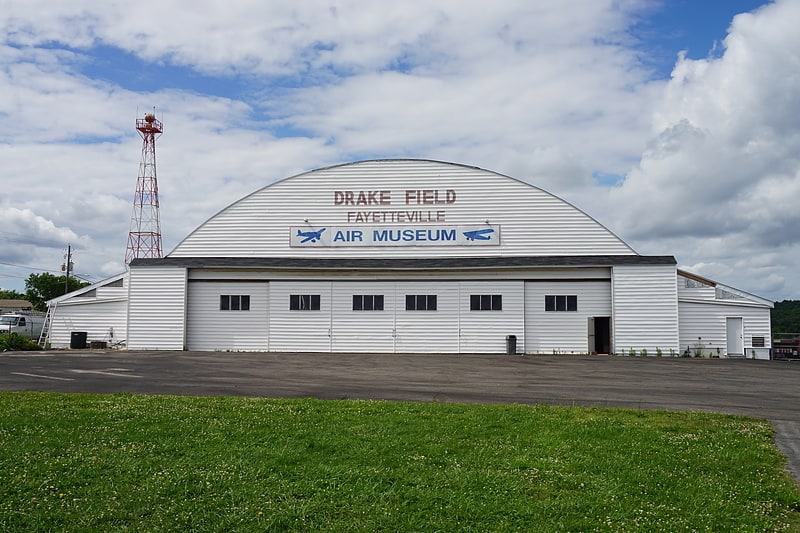
The Arkansas Air & Military Museum is an aviation and military museum located at Drake Field in Fayetteville, Arkansas. It is the largest aviation museum in Arkansas.[1]
Address: U.S. Highway 71, 72701 Fayetteville
Donald W. Reynolds Razorback Stadium
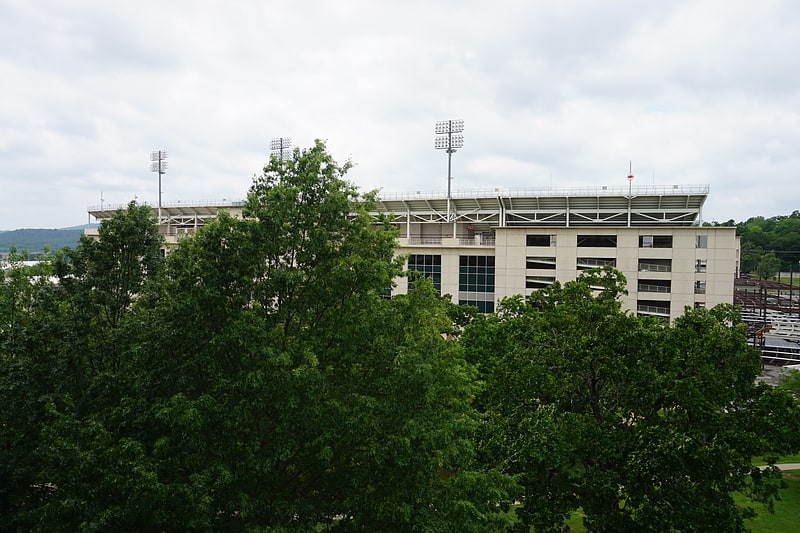
Stadium in Fayetteville, Arkansas. Donald W. Reynolds Razorback Stadium is an American football stadium in Fayetteville, Arkansas and serves as the home field of the University of Arkansas Razorbacks football team since its opening in 1938. The stadium was formerly known as Razorback Stadium since 1941 before being renamed in 2001 in honor of Donald W. Reynolds, an American businessman and philanthropist. The playing field in the stadium is named the Frank Broyles Field, honoring former Arkansas head football coach and athletic director Frank Broyles.
During the 2000-2001 renovations, Razorback Stadium increased the seating capacity from 50,019 to 72,000, with an option to expand capacity to 76,000 with the "temporary" bleacher seating atop the south end.[2]
Address: 350 N Razorback Rd, 72701-3954 Fayetteville
Baum Stadium
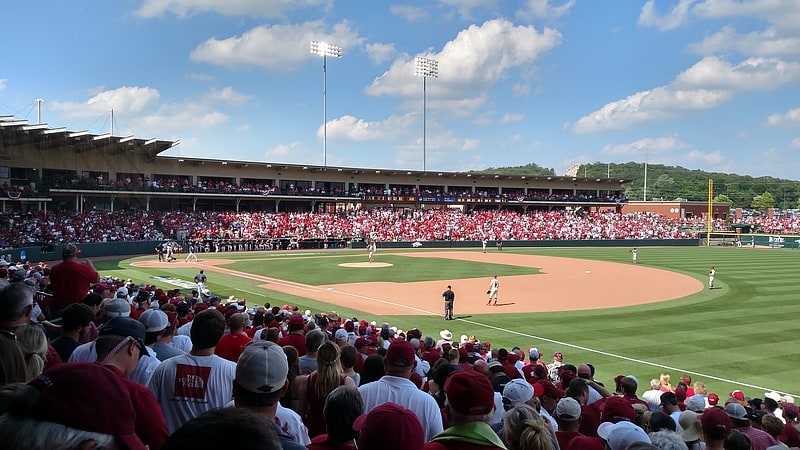
Playing field in Fayetteville, Arkansas. Baum–Walker Stadium at George Cole Field is the home venue of the Arkansas Razorbacks baseball team of the NCAA Division I Southeastern Conference, located in Fayetteville, Arkansas, United States. The playing field itself is named George Cole Field, in honor of the former Arkansas athletic director. George Cole Field was also the name of the Razorbacks' old home stadium, in use from 1975 to March 1996. Baum Stadium replaced George Cole Field in April 1996. The stadium is located one-half mile from the main Arkansas campus, which lies across Razorback Road from the stadium. On January 31, 2019 the stadium was renamed Baum–Walker Stadium at George Cole Field in recognition of longtime support from the Walker Family and the Willard and Pat Walker Charitable Foundation.[3]
Address: 1255 S Razorback Rd, 72701-7870 Fayetteville
Fayetteville Historic Square
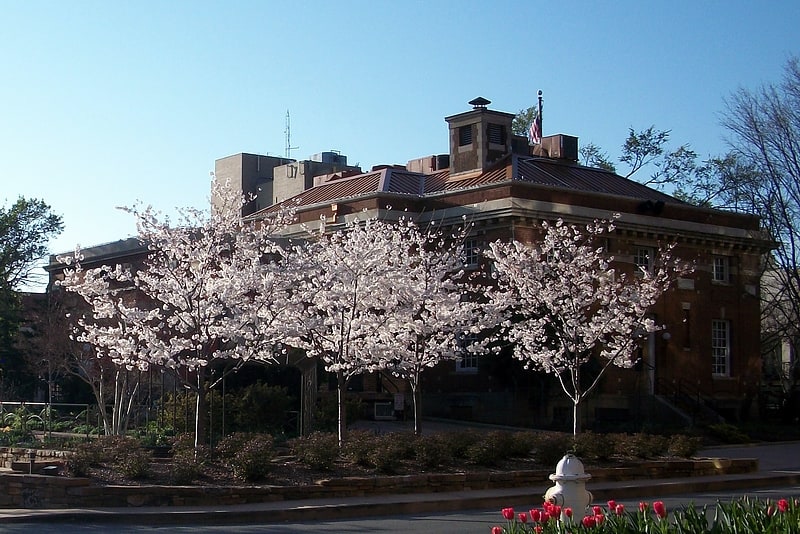
The Fayetteville Historic Square, in Fayetteville, Arkansas, includes the original Fayetteville post office, the Old Bank of Fayetteville Building, the Lewis Brothers Building, the Mrs. Young Building, and the Guisinger Building. These buildings are listed in the National Register of Historic Places. There are several more recent buildings located on the Square.
The historic district is defined by Center Street on the north, Mountain Street to the south, Block Avenue to the west and East Avenue to the east. The block within these one-way streets contains the Old Post Office, and formerly, the County Courthouse.[4]
Address: 1 West Center Street, Fayetteville
Walton Arts Center
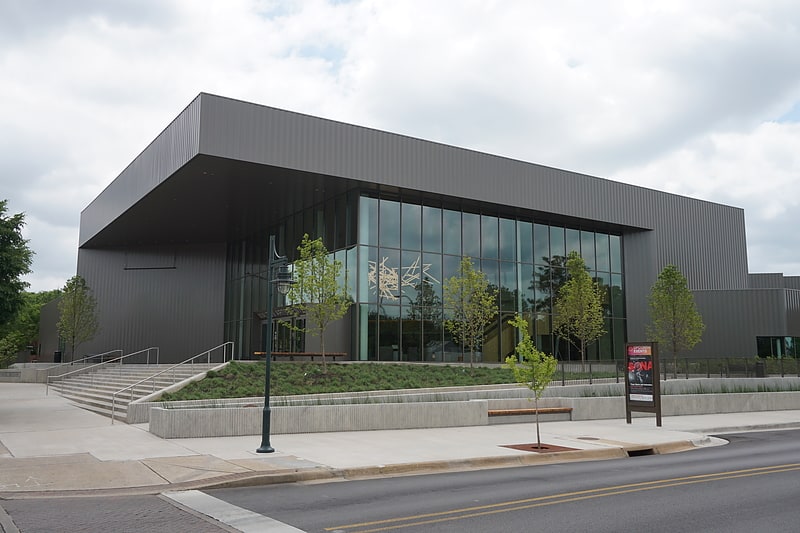
Performing arts center in Fayetteville, Arkansas. The Walton Arts Center is a performing arts center. It is located in Fayetteville, Arkansas near the campus of the University of Arkansas, and serves as a cultural center for the Northwest Arkansas area. The building was opened in 1992 in large part because of funds donated by the Walton family. The center hosts musicals, plays, and other artistic and educational events.[5]
Address: 495 W Dickson St, 72701-5108 Fayetteville
Chi Omega Greek Theatre

Theatre in Fayetteville, Arkansas. The Chi Omega Greek Theatre is a structure on the University of Arkansas campus in Fayetteville, Arkansas. It was a gift to the university from Chi Omega, and it was completed in 1930. The structure was added to the National Register of Historic Places in 1992.[6]
Address: 980 West Dickson Street, Fayetteville
Fayetteville Public Library

Public library system. The Fayetteville Public Library is a library in Fayetteville, Arkansas. The Leadership in Energy and Environmental Design silver-certified library was named "Library of the Year" in 2005 by Library Journal and an "American Landmark Library" by TravelSmart.[7]
Address: 401 W Mountain St, 72701-5819 Fayetteville
Old Main

Building in Fayetteville, Arkansas. Old Main is the oldest building on the University of Arkansas campus in Fayetteville, Arkansas. It is one of the most recognizable symbols of the University, and of higher education in general in Arkansas.[8]
Fayetteville Confederate Cemetery
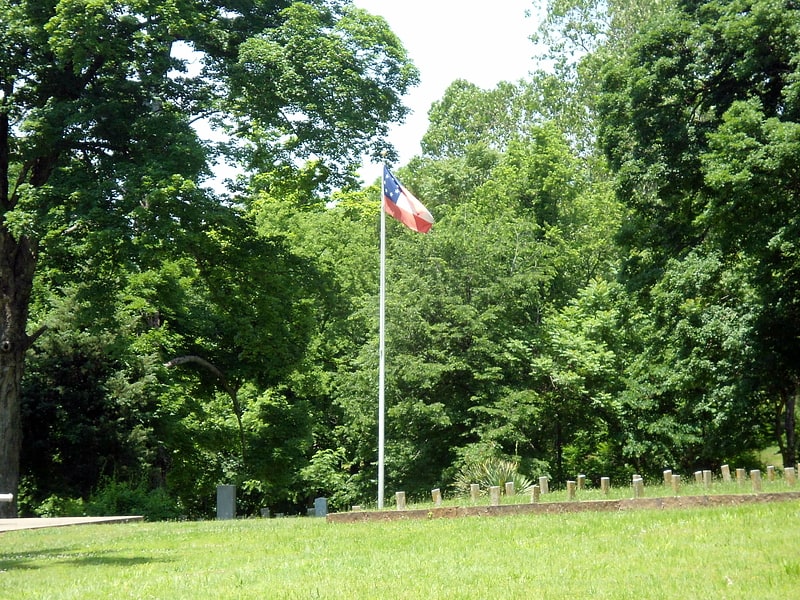
Cemetery in Fayetteville, Arkansas. Fayetteville Confederate Cemetery is a cemetery for soldiers of the Confederate States located on the eastern side of Fayetteville in Washington County, Arkansas. Added to the National Register of Historic Places in 1993, the cemetery encompasses 3.5 acres.[9]
Address: 514 E Rock St, 72701-4322 Fayetteville
Washington County Courthouse

The Washington County Courthouse is the name of a current courthouse and that of a historic one in Fayetteville, Arkansas, the county seat of Washington County. The historic building, built in 1905, was listed on the National Register of Historic Places in 1972. The historic courthouse is the fifth building to serve Washington County, with the prior buildings located on the Historic Square where the Old Post Office is today. The building is one of the prominent historic buildings that compose the Fayetteville skyline, in addition to Old Main.
A new building was acquired in 1989 to better serve Washington County's county administration needs. The present-day courthouse is located at the intersection of College Avenue and Dickson Street, just north of historic building. Most county offices are located in the new building, with the historic courthouse serving as a repository for county records.[10]
Address: 4 South College Avenue, Fayetteville
Fayetteville National Cemetery
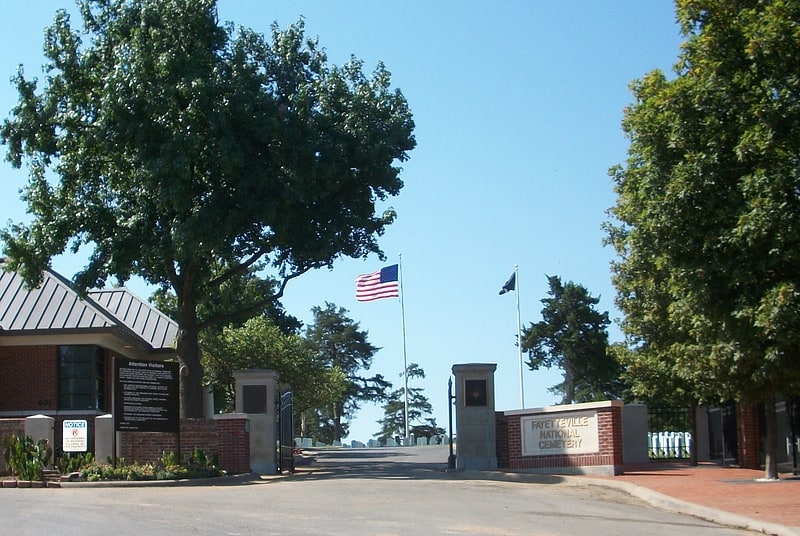
Cemetery. Fayetteville National Cemetery is a United States National Cemetery located on the southern side of the city of Fayetteville in Washington County, Arkansas. It encompasses nearly 15 acres. As of 2020, over 11,000 veterans and family members were interred in this location, with approximately 200 new burials per year.[11]
Address: 700 S Government Ave, Fayetteville
Evergreen Cemetery

Cemetery in Fayetteville, Arkansas. Evergreen Cemetery, located at William and University Streets in Fayetteville, Arkansas, is one of the largest early historic cemeteries in the region, with burials dating to 1838. Evergreen is included in the National Register of Historic Places for its age, and because numerous important historical figures are buried there. These include Senator J. William Fulbright, Governor Archibald Yell, educator Sophia Sawyer, industrialist Lafayette Gregg, and many others.
The cemetery was founded as a private cemetery by John Thomas in the late 1830s or early 1840s. Later it was owned by the local Masonic Lodge and Independent Order of Odd Fellows chapter. These organizations deeded the cemetery to the city in 1871. It is currently owned and operated by the Fayetteville Evergreen Cemetery Association.[12]
Dickson Street
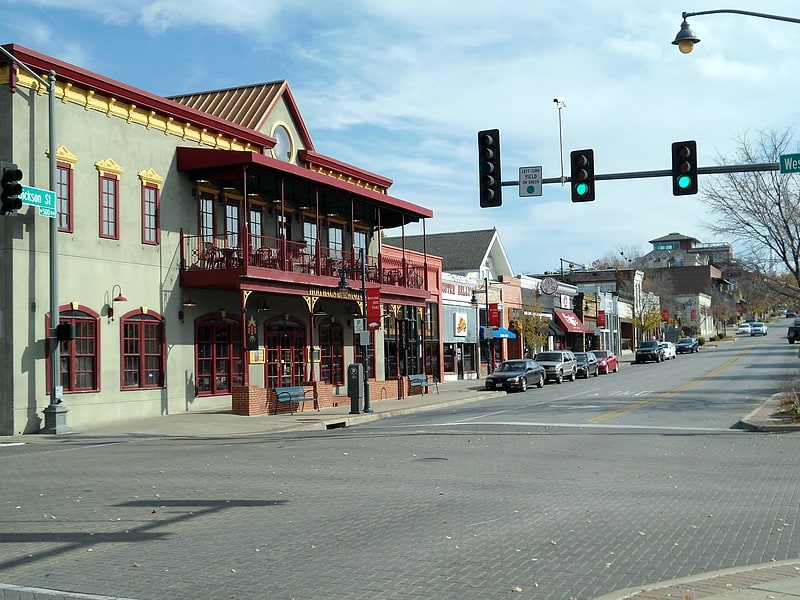
The West Dickson Street Commercial Historic District, known as Dickson Street, is an area in downtown Fayetteville, Arkansas just off the University of Arkansas campus. It is lined with multiple bars, restaurants, and shops unique to the area. Many large condo projects are now under construction as well. Dickson Street is home to the Walton Arts Center, and serves as the focal point of the Bikes, Blues, and BBQ bike festival, the third largest bike rally in the nation.
Dickson Street is widely considered one of the two most popular entertainment districts in the state, along with the River Market District in downtown Little Rock.[13]
Address: 325 W Dickson St, 72701-5106 Fayetteville
University of Arkansas

Land-grant university in Fayetteville, Arkansas. The University of Arkansas is a public land-grant research university in Fayetteville, Arkansas. It is the flagship campus of the University of Arkansas System and the largest university in Arkansas. Founded as Arkansas Industrial University in 1871, classes were first held on January 22, 1872, with its present name adopted in 1899. It is noted for its strong programs in architecture, agriculture, communication disorders, creative writing, history, law, and Middle Eastern studies, as well as for its business school, of which the supply chain management program was ranked the best in North America by Gartner in July 2020. In a 2021 study compiled by DegreeChoices and published by Forbes, the University of Arkansas ranked 13th among universities with the most graduates working at top Fortune 500 companies.
The university campus consists of 378 buildings spread across 512 acres (2.07 km2) of land in Fayetteville, Arkansas. Some well known architecture on campus includes Old Main, the first permanent academic building erected. Academic programs are in excess of 200. Enrollment for the fall semester of 2019 was 27,559. The ratio of students to faculty is approximately 19:1. The university is classified among "R1: Doctoral Universities – Very high research activity" and totaled expenditures of $175.5 million in FY 2018.
UA's athletic teams, the Arkansas Razorbacks, compete in NCAA Division I as members of the Southeastern Conference (SEC) with eight men's teams and eleven women's teams in thirteen sports. The university is known for its traditions, including Calling the Hogs at sports events, and the Senior Walk, more than 4 miles (6.4 km) of campus sidewalk etched with the names of all UA graduates since 1871. The University of Arkansas is also known for being the home of the founding chapter of Chi Omega sorority.[14]
Address: 201 Music Building, University of Arkansas, Fayetteville
Clinton House
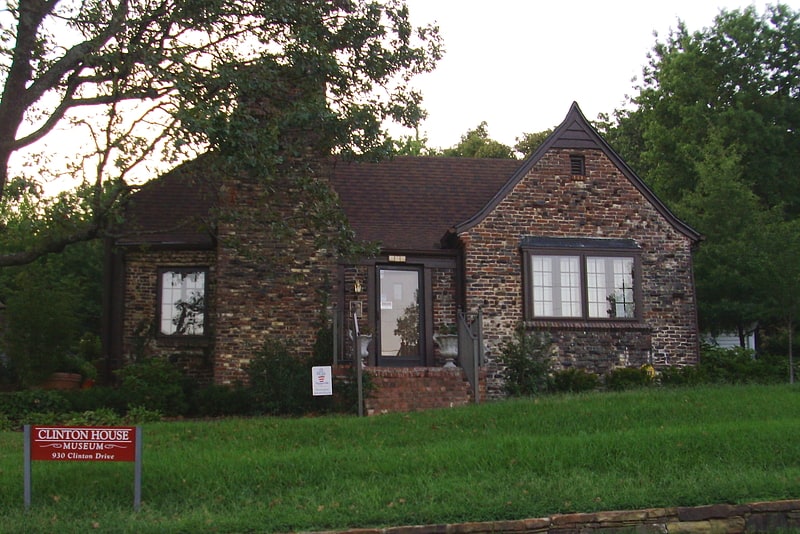
The Clinton House is a historic house museum at 930 West Clinton Drive in Fayetteville, Arkansas. Built in 1931, it was the first home of Bill Clinton and Hillary Rodham while they both taught at the University of Arkansas School of Law and was where they married in 1975. The house was listed on the National Register of Historic Places in 2010.[15]
Mount Sequoyah Cottages

The Mount Sequoyah Cottages are a pair of historic summer cabins at 808 and 810 East Skyline Drive in Fayetteville, Arkansas. They are both single-story wood-frame structures, faced in fieldstone and topped by a gable roof. They were built in the 1920s, around the time that the adjacent Mount Sequoyah Methodist summer camp was developed, and represent a period when the "back to nature" movement was a leading element in the development of summer properties.
The cottages were listed on the National Register of Historic Places in 2012.[16]
Address: 150 NW Skyline Dr, Fayetteville
Mullins Library
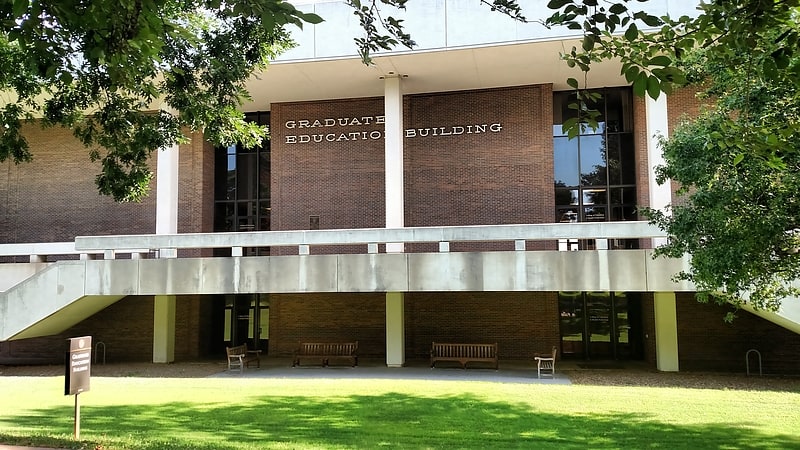
There are many buildings on the campus of the University of Arkansas. Most of the historic structures are part of the University of Arkansas Campus Historic District on the National Register of Historic Places. This article focuses on the non-listed buildings.[17]
Address: 365 N McIlroy Ave, 72701 Fayetteville
Botanical Garden of the Ozarks
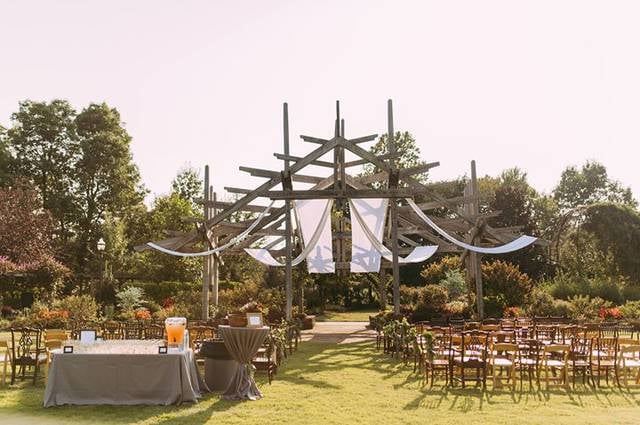
Botanical garden in Fayetteville, Arkansas. The Botanical Garden of the Ozarks is a not for profit 5013 organization located on the east side of Lake Fayetteville in Fayetteville, Arkansas, United States. The 44-acre site is located at the border between Fayetteville and Springdale on Arkansas Highway 265. The garden consists of 6 cultivated acres featuring 12 display gardens and the state's only Butterfly House where four seasons of flora and fauna thrive. The BGO is a member-supported garden dedicated to education and environmental awareness. The garden is also a community destination for celebrations and unique nature experiences. The garden offers events throughout the year, including the annual Greening of the Garden Gala, Firefly Fling and Chefs in the Garden. Additionally, the garden hosts students from across the region for interactive field trips and offers educational programs and classes for both children and adults.[18]
Address: 4703 N Crossover Rd, 72764-9127 Fayetteville
Son's Chapel
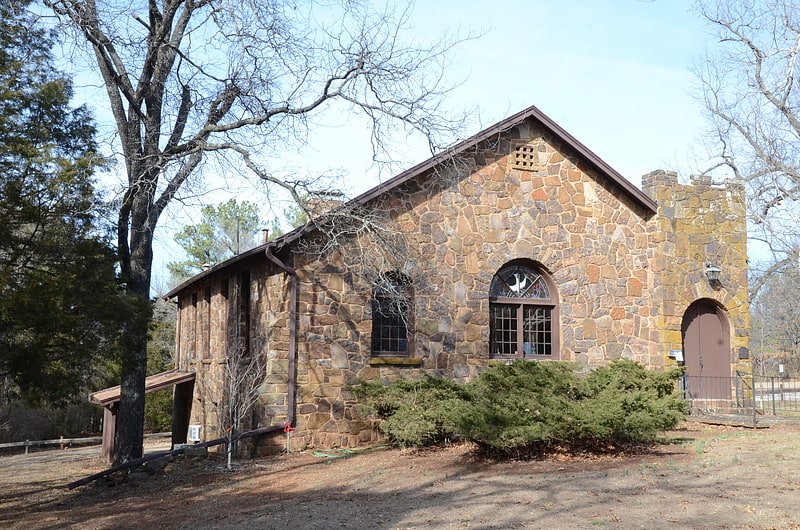
Church in the Washington County, Arkansas. Son's Chapel is a historic church at 5480 East Mission in Fayetteville, Arkansas. It is a single-story rustic fieldstone structure, with front-gable roof and a squat square tower set off to one side. Built between 1933 and 1937, the building is an interesting and unusual mix of Gothic and Romanesque styles, with windows set under Romanesque arches, and the tower with a crenellated parapet. The church is the second for the congregation, which was established c. 1848 on land donated by Michael Son.
The known history of this area starts in approximately 1842. By the Treaty of Dancing Rabbit Creek, this land of 160 acres was in a tract issued to a Choctaw man, Ah-To-Chubee. After his death, the land was deposited in the general land office in Fayetteville.
Michael Son was born in Virginia and his wife Nancy (born in South Carolina) in the late 1770s. They, and other Son family members migrated to NW Arkansas via Kentucky and Missouri, and were issued a patent to 40 acres of the land in 1848. This community is called "Son's Chapel" after the two brothers: Michael & Abram Son, who settled here, in what was wooded farmland. The Son's built a home and in 1852, being good community citizens, conveyed about 2 acres of land, for $2, to the Methodist Protestant Church, for a cemetery and church yard. A log chapel, called "Son's Chapel", was built on the north end of the cemetery and was used for both church activities and a community school. Three different denominations held services there in the early days as well as various community groups who also used the building.
When the small log building could no longer serve the needs of a growing farm community, a frame school house was built across the road (behind the current chapel) and discussion started about how a community center could be built.
The Rural Builders Association, formed in 1922, still supports the care and maintenance of the building through fund raising efforts. Son's Chapel was listed on the National Register of Historic Places as of 2006. The bronze plaque is mounted outside the front door.
The Son's Chapel Cemetery across the street has acquired several more tracts of land to attain its present size and is one of the oldest cemeteries in the county. While no "famous" people are buried there, there are many old pioneer graves, and some unmarked graves, whether pauper, slave or Indian. It is still an active cemetery with its own Board of Trustees, who holds an annual workday and Memorial Service on Memorial Day week-end. Nancy Son, wife of Michael Son is the only Son buried there. Michael Son is buried with his brother in Missouri. In the mid 19th Century, the City of Fayetteville built the County Poor Farm adjacent to the Cemetery and most probably buried some indigents in unmarked graves. The "Poor Farm" was here until relocated to Mt. Comfort in the 1880s.
Bibliography: The History of Son's Chapel by Trisha Beland, presented to WCHS in 2007
The building was listed on the National Register of Historic Places in 2003.[19]
Chi Omega Chapter House
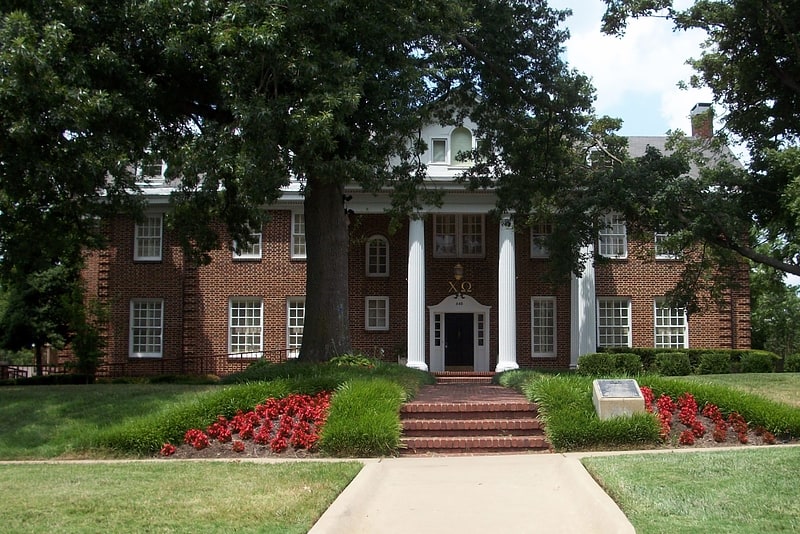
The Chi Omega Chapter House is a building built in 1927 on the campus of the University of Arkansas in Fayetteville, Arkansas. The building was listed on the National Register of Historic Places in 1995.[20]
Address: 940 W Maple St, 72701 Fayetteville